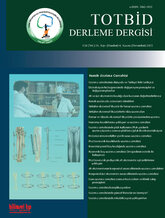
Posttraumatic leg length discrepancy is a complication of long bone fractures and significantly affects the quality of life of patients. Factors such as malunion, nonunion, infection and nonunion, growth plate injuries and avascular necrosis play a role in the etiology. Shortening can be easily encountered in multi-segmented high-energy fractures if care is not taken during surgery. In the literature, significant length discrepancy (>2 cm) has been reported in 5-15% of cases after femur and tibia fractures. The most commonly used methods in the treatment of posttraumatic shortening are circular external fixators, unilateral external fixators, combination of external fixators over nails, combination of plate screws and external fixators and lengthening with magnetic intramedullary nails. All of these methods used today are based on the principles of distraction osteogenesis. Regardless of which method to be used, increased risk of complications occurs than normal when lengthening is performed in posttraumatic shortness. It should be kept in mind at every stage of surgery that the anatomy is no longer normal due to previous trauma or surgery. Schanz pin and wire applications should be done carefully. Although technically difficult, lengthening with a success rate of 90 per cent can be performed.